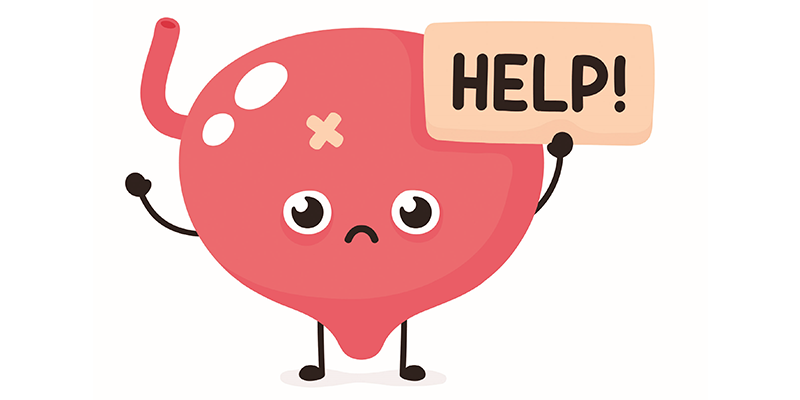Back
Why Do I Feel Like I Have To Pee All The Time?
By Dr. Christine Martirez PT, DPT on 11/14/2024

If you find yourself needing to pee constantly, you’re not alone. Frequent urinary urgency can disrupt daily life and lead to frustration, stress, and even sleep disturbances. Often, the cause isn’t a simple increase in fluid intake—it can stem from the anatomy of the bladder, the complex role of the pelvic floor, and sometimes from dysfunction within these areas. Here, we’ll explore why this happens, what the pelvic floor is, and how pelvic floor physical therapy can help restore balance to the urinary system.
Anatomy of the Bladder and Its Connections
The bladder is a hollow, muscular organ situated within the pelvis. It sits like a balloon behind the pubic bone, supported by ligaments that anchor it to the pelvis, specifically the pubic bone, and connect it to surrounding structures. When empty, the bladder sits low in the pelvis, but as it fills, it stretches upward toward the abdomen. The bladder wall itself is composed of several layers of muscle, most importantly the detrusor muscle, which contracts to expel urine when you’re ready to go.
To function properly, the bladder relies on coordination with the pelvic floor muscles, which support its base. These muscles, arranged in layers across the pelvis, help control the release of urine by keeping the bladder outlet (the urethra) closed until we voluntarily relax them. This “sphincteric” function of the pelvic floor muscles is one of their primary roles and is crucial for maintaining continence.
What Are the Pelvic Floor Muscles?
The pelvic floor muscles are a group of muscles that form a hammock-like support system at the base of the pelvis. Key muscles include the pubococcygeus, puborectalis, and iliococcygeus, which together make up part of the broader levator ani muscle group. These muscles connect from the pubic bone at the front to the tailbone at the back, supporting the bladder, uterus (in females), and rectum.
These muscles perform five essential functions, known as the “5 S’s”:
Support
of the pelvic organs (bladder, uterus, and rectum)
Sphincteric
function to control urination and defecation
Sexual
function, contributing to arousal and sensation
Stability
for the pelvis and lower back
Sump pump
to aid in lymphatic drainage and circulation in the pelvis
When these muscles are healthy, they work in sync with the bladder to regulate when and how frequently you urinate. However, dysfunction in the pelvic floor muscles can disrupt this balance and lead to problems.
Hypertonic Pelvic Floor Muscles: A Hidden Cause of Urinary Urgency and Frequency
One common but lesser-known contributor to urinary urgency and frequency is hypertonicity of the pelvic floor muscles, meaning the muscles are too tight or tense. When the pelvic floor muscles remain in a shortened, contracted state, they can press on the bladder and other surrounding structures, sending confusing signals to the brain. This can create a sensation of urinary urgency even when the bladder isn’t full.
In cases of hypertonicity, the pelvic floor muscles may have difficulty fully relaxing, and this can make it hard to empty the bladder completely. As a result, some urine may remain in the bladder, which can cause you to feel the urge to go more often. Additionally, if the muscles responsible for closing off the urethra aren’t functioning correctly, they may cause leaking, or they may prevent the bladder from emptying fully when you do try to go.
How Pelvic Floor Therapy Can Help
Pelvic floor therapy can be highly beneficial in cases of urinary urgency and frequency, especially when related to hypertonic muscles. A pelvic floor therapist can provide specialized techniques and exercises to help you regain control over the pelvic floor and bladder function.
What You Can Expect from Pelvic Floor Therapy
Comprehensive Assessment
A therapist will begin with an assessment of your medical history and urinary habits, along with an examination of the pelvic floor muscles, abdomen, hips, and lower back to identify any areas of tension, weakness, or dysfunction.Manual Therapy
Gentle manual therapy techniques can release tight or overactive muscles, improving their ability to relax. This may involve external and internal work, depending on your comfort level and the therapist’s assessment.Biofeedback and Neuromuscular Retraining
With techniques like biofeedback, therapists can help you gain awareness of your pelvic floor muscles, learning how to relax and contract them properly.Bladder Training Techniques
Pelvic floor therapists can also provide guidance on bladder retraining, helping you gradually increase the time between bathroom visits, which can reduce the sensation of urgency over time.Lifestyle and Habit Modifications
Your therapist may provide strategies on fluid intake, diet, and how to avoid bladder irritants that can trigger urgency, such as caffeine or acidic foods.Breathing and Relaxation Exercises
Learning to manage your breath and downregulate the nervous system can make a significant difference in reducing pelvic floor tension, helping to alleviate urgency and frequency symptoms.
If you’re struggling with frequent or urgent urination, pelvic floor dysfunction might be playing a role. A pelvic floor physical therapist can evaluate your symptoms and help you address underlying muscle imbalances, tension, or behavioral factors contributing to these issues. Pelvic floor therapy is a proactive approach that can provide long-term relief and help you regain control over your urinary health.
Suffering from urinary urgency and frequency? Reach out to us at Pelvic Health Center in Madison, NJ to set up an evaluation and treatment! Feel free to call us at 908-443-9880 or email us at receptionmadison@pelvichealthnj.com.
Read More:
How Chronic Pelvic Congestion in Men Contributes to Prostatitis By Shannon Strauch, PTA, STMT-1 on 12/11/2024 How lymphatic issues can cause symptoms of prostatitis Prostatitis and Tight Pelvic Floor Muscles: A Comprehensive Guide By Shannon Strauch, PTA, STMT-1 on 12/10/2024 How a tight pelvic floor can be the reason for prostatitis symptoms
Are you ready to live pain free?
Request An Appointment